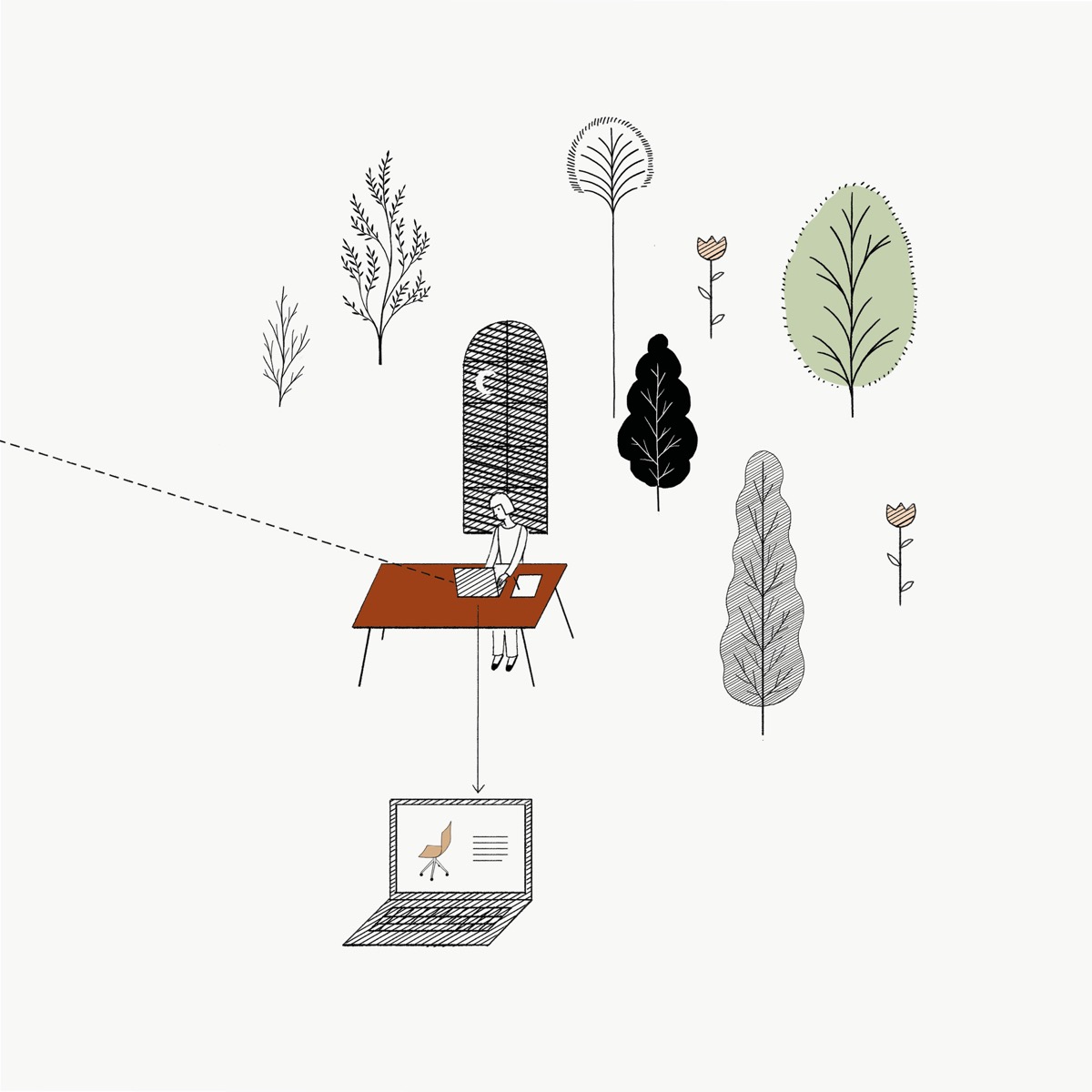
Nipa Doshi and Jonathan Levien on designing a sculptural form for personal space that considers the environment with the Lepal armchair.
Where did the idea of creating an armchair come from?
JL: The armchair is another way of defining space. When you see the piece in the grand scheme of our collection for Arper, the Shaal sofa and Roopa tables, it has a function to offer personal, private space within an overall layout. We are thinking of the whole space, and each piece has a part to play.
ND: The idea was to create an environment that can be hybrid and work in many spaces. How do you create a family of objects that can make a space? It is not about creating pieces that are matching, but to create plurality in the environment. The pieces can work together and they don't necessarily need to look like each other.
Tell us about the process of designing Lepal
JL: The frame defines it, the centre of the chair, and that's where I normally start. From there, I worked in cardboard to create the shape, and that involved pattern cutting. We had to translate this into a softer form that could be moulded. The language came from cardboard and creating 3D shapes from 2D surfaces. Nipa is simultaneously drawing the piece, and tries to fall in love with its design – the ideas are coming from both of us.
ND: Making is such an important part of our process. I think the shapes are what they are because Jonathan is actually making it by hand. There is a sense of serendipity and things happen when you are making something in this way. We define the shape through 3D printing and we send this to Arper.
How does this chair stand out from others?
JL: During our design process, we try to hit on a visual identity and character. In this case, I really wanted to create strong geometry – the verticals and horizontals are strong. Yet, you’re balancing that with sensual and organic characteristics. It’s a balance.
ND: When you think of the identity of the piece, we wanted it to have familiarity. Without being nostalgic, we wanted this piece to be like a chair you could find in a vintage shop. We want to create pieces that appeal to you for a long time, that’s really important for me. The longevity of the piece is key – it is about craftsmanship, proportion, balance and desirability.






How did you ensure the developed piece has the environment in mind?
ND: One of the most important things for us when we were working on Lepal was typology, but also the question of ‘how can you make a chair which does not use glue?’ Most upholstery uses glue and usually when fabric is stuck onto surfaces, you cannot separate this. The environment is considered with the materials, construction (you can repair and replace components) and it is a compact piece.
JL: You would usually use glue in an upholstered chair on the concave surfaces where you would want the fabric to go into a shape. To avoid that we have a cushion which is embedded – it performs a function of pulling all the fabric back into the concave shell.
Tell us about the shapes and sensibilities of Lepal
JL: There is an importance of lightness that we try to incorporate with Arper pieces. The base contributes to that sense of anti-gravity. The chair form is a reflection of the base. All the first studio prototypes had a frame that cradled the chair form until we realised the A frame was necessary to to give the idea of floating and pivoting to create lightness.
ND: This piece for me has an elegant spirit, but with an engineered and industrial look of the future. Arper was able to make the ideas happen and solve problems within the design. This chair is quite sculptural, it has a hard shell with soft cushions inside, it is comfortable and gives you privacy. We balanced that with light A-frame legs, so it feels like it is cantilevered. I imagine the piece in mid tone colors.
Let’s talk about the functionality of Lepal. Where do you imagine it going?
JL: Lepal is universal. If you create something with a unique idea, and you go through the making experience, it has a universal appeal.
ND: We wanted to create pieces that work within the residential environment and also in an office space. We asked ourselves - how do you bring elements of softness into a work environment or public space? Because of the sculptural form of the chair, I imagined it used in multiples. I can imagine it in co-working spaces, I imagine it in hotel environments and lobbies. No matter which angle you look at it from, it looks good.


What did you like about working with Arper on the creation of Lepal?
JL: We believe there is always a way to make a good idea and this is especially true when working with Arper’s engineering team. I was thinking of the model in two parts, but Arper said they could mould it in one piece. They are dedicated to achieve what we are trying to do.
ND: Arper is very considered with their approach. There are a lot of problems solving in the engineering part and their research team is great. For example, there is a lot of gathering in the fabric so we don’t use glue. It is all a learning process.
Do you have a favourite part of this armchair?
JL: For me, it is the geometry balanced with the organic, sensual aspect – it's a really good balance.
ND: For me, it’s the tailoring aspect of it. I love the material combination. All of the small details. When you have a piece in your home, the more you use it, the more you realise its beautiful details and refined craftsmanship.




